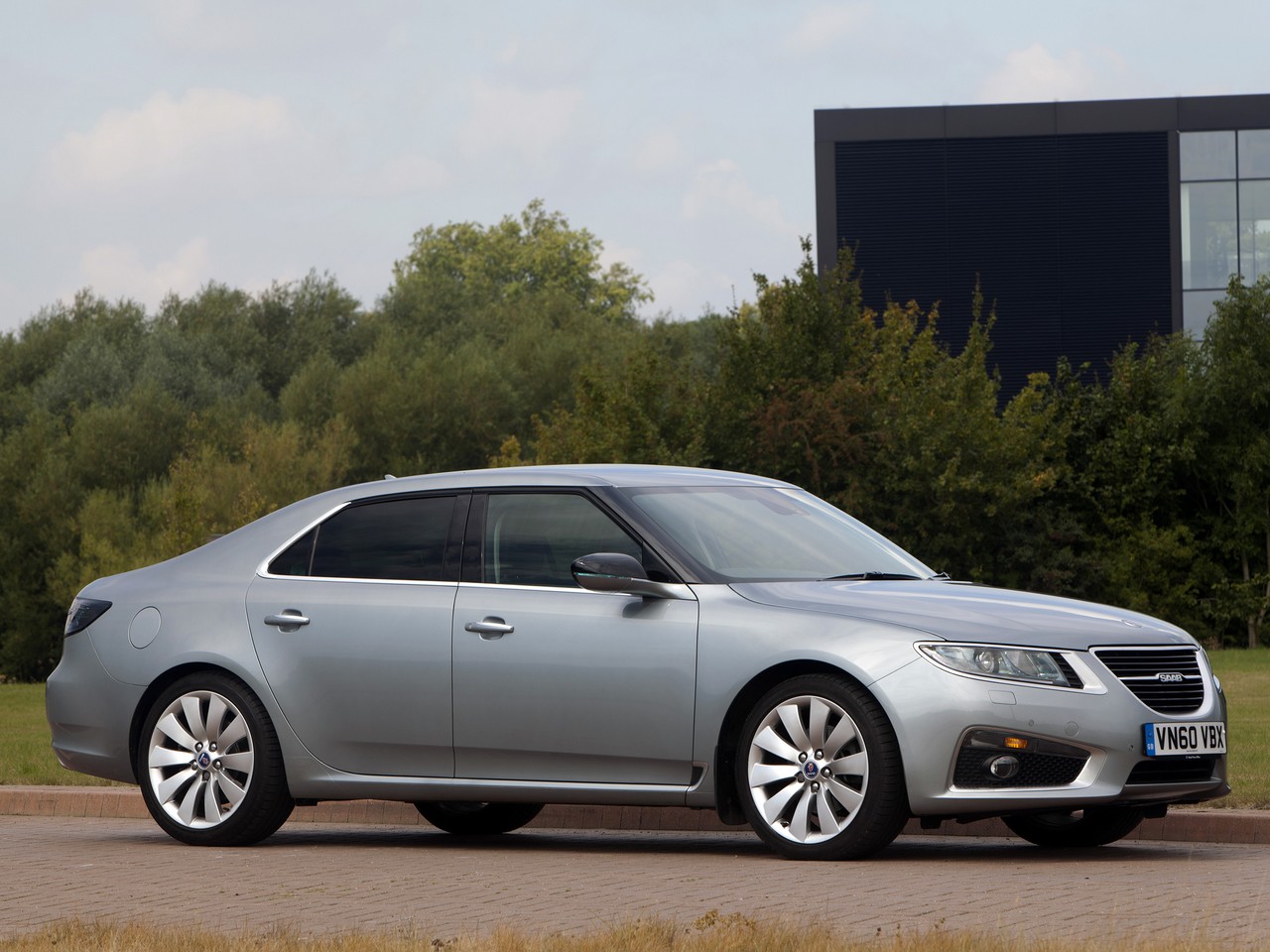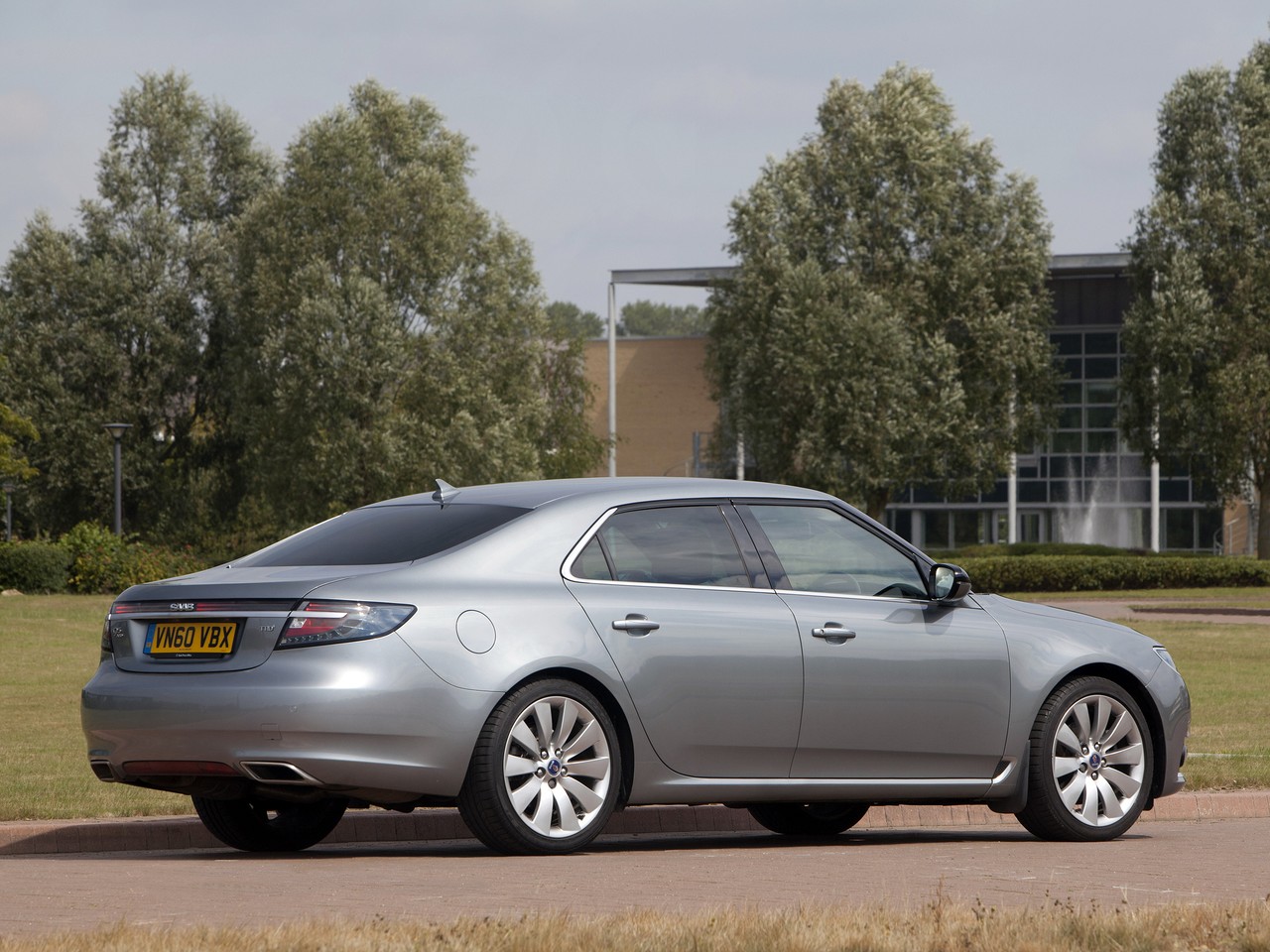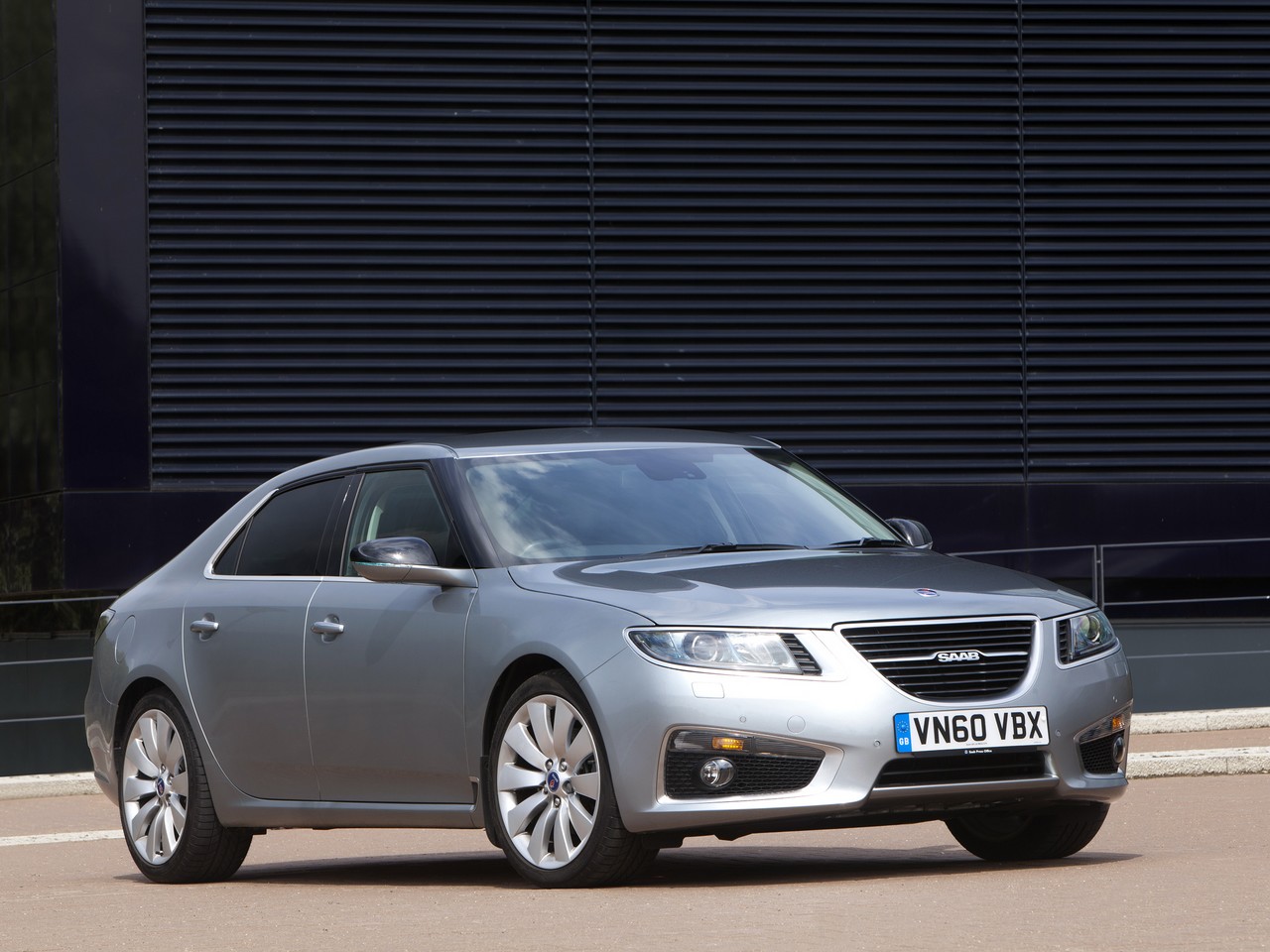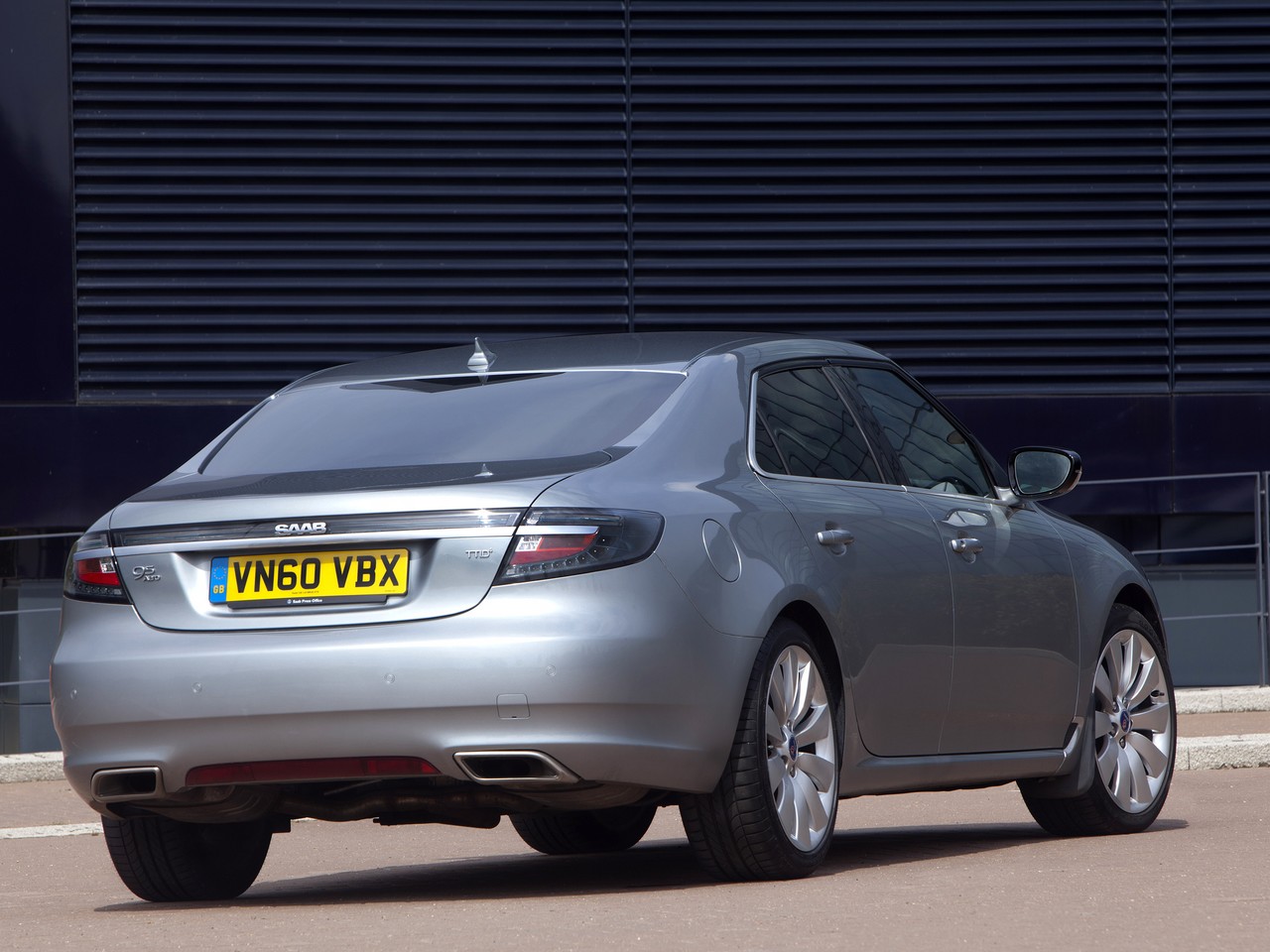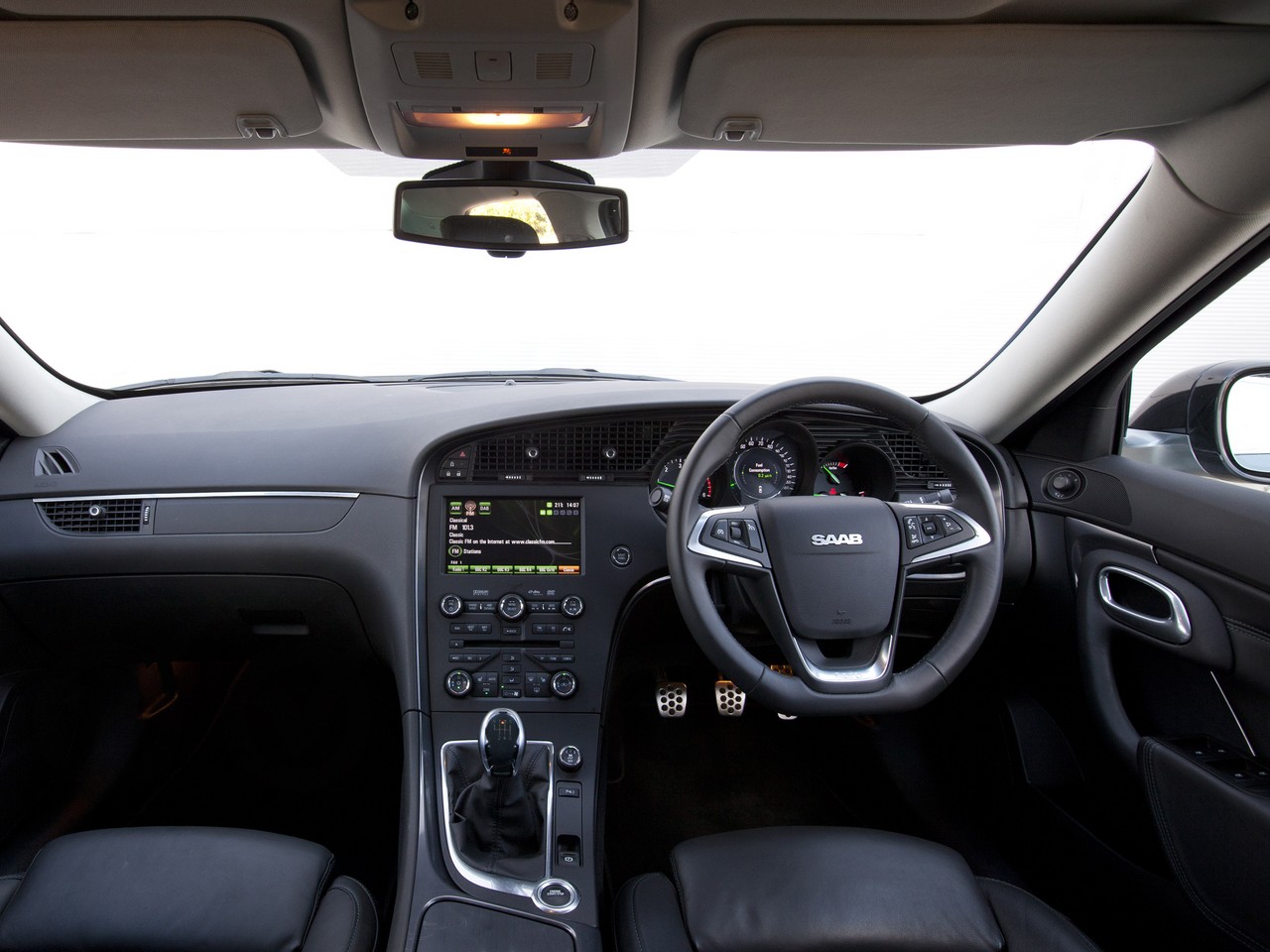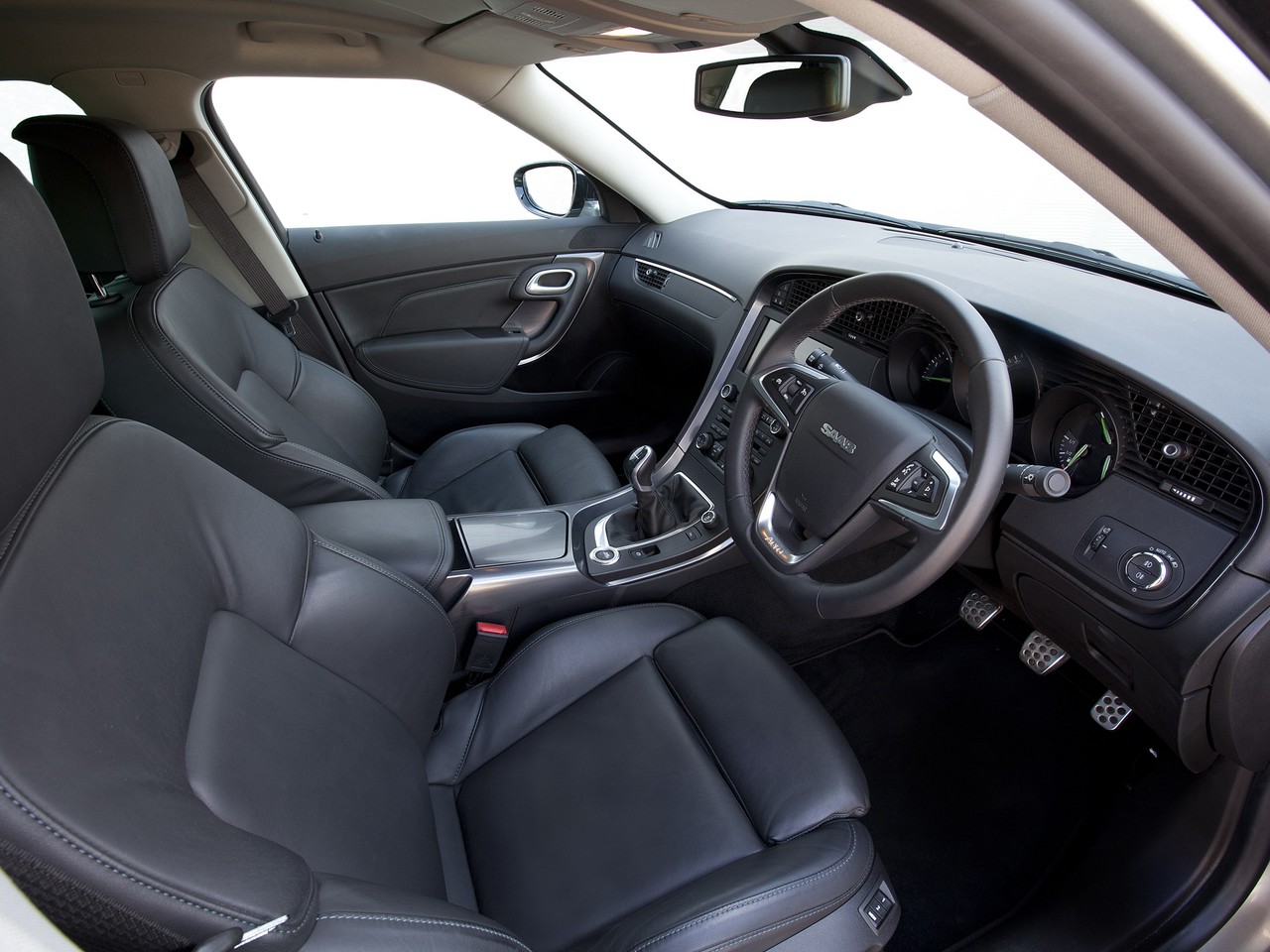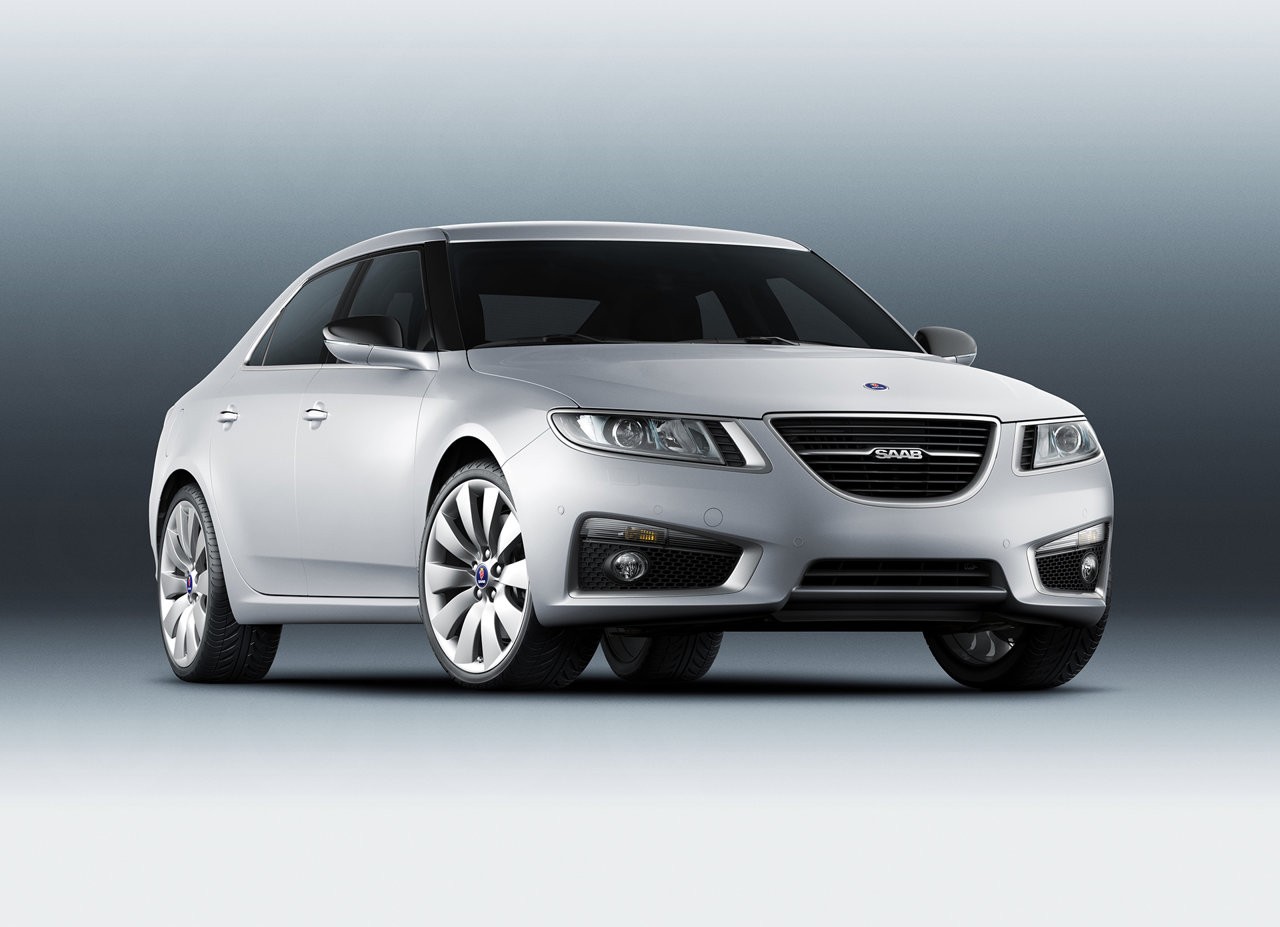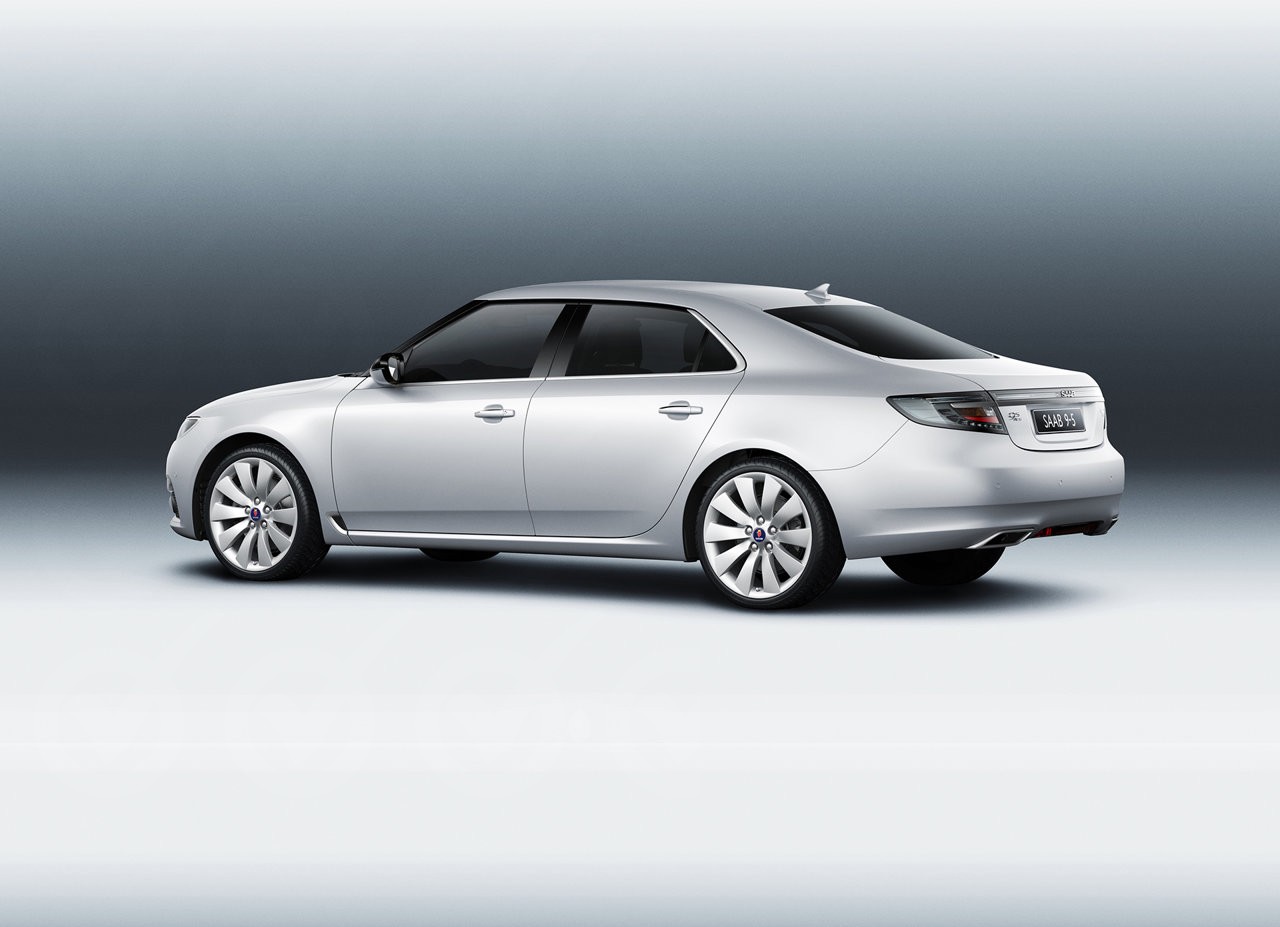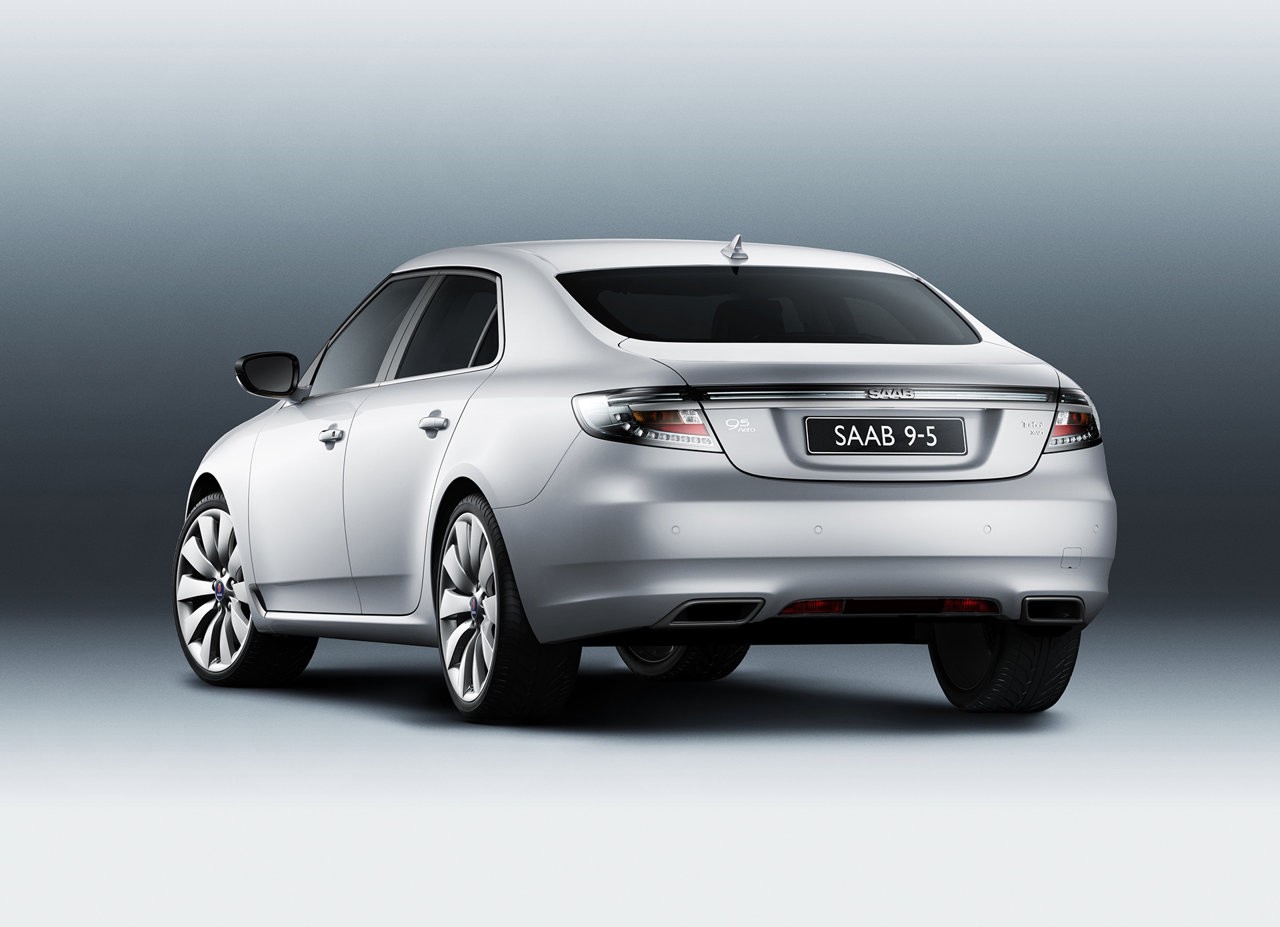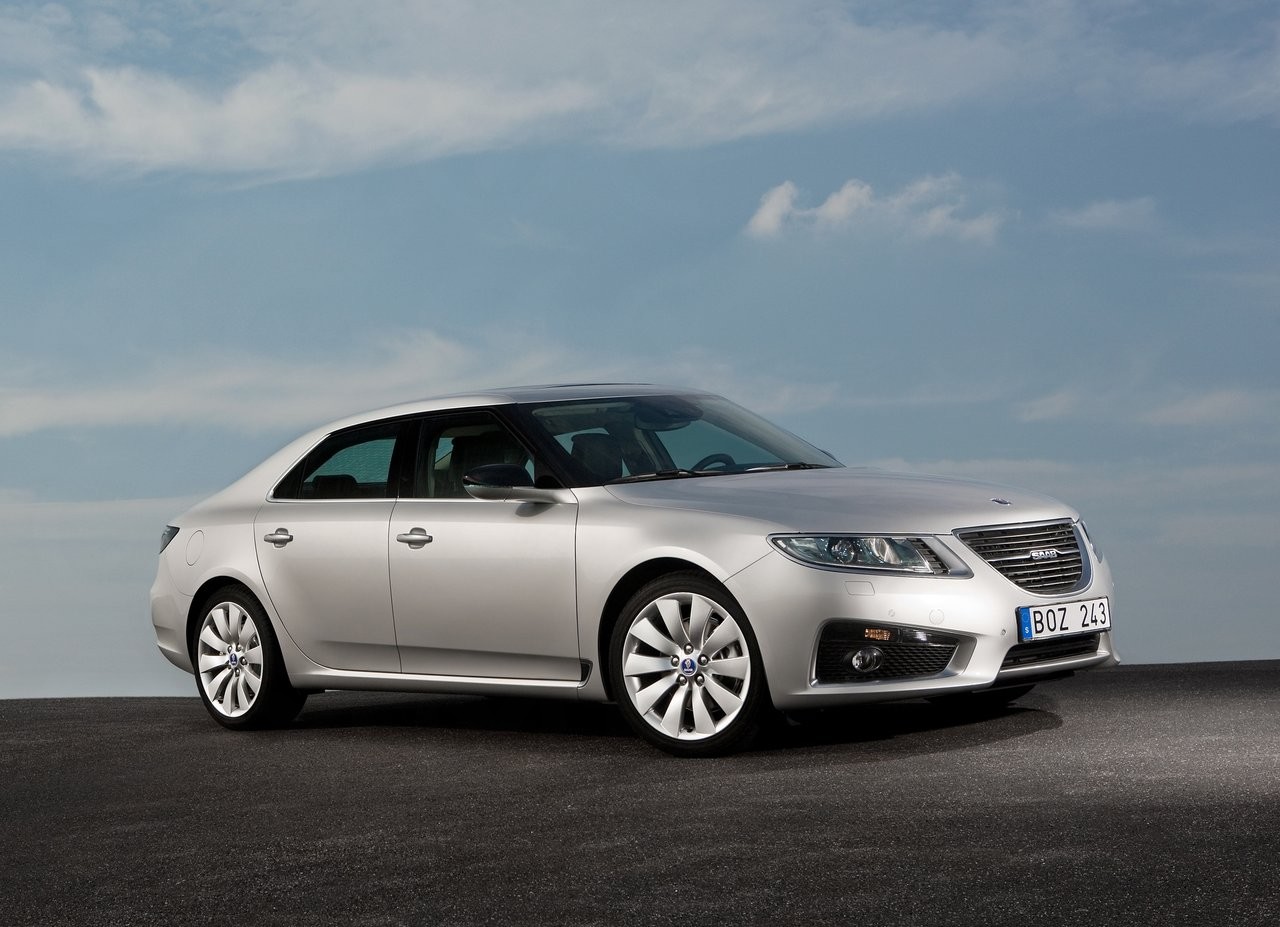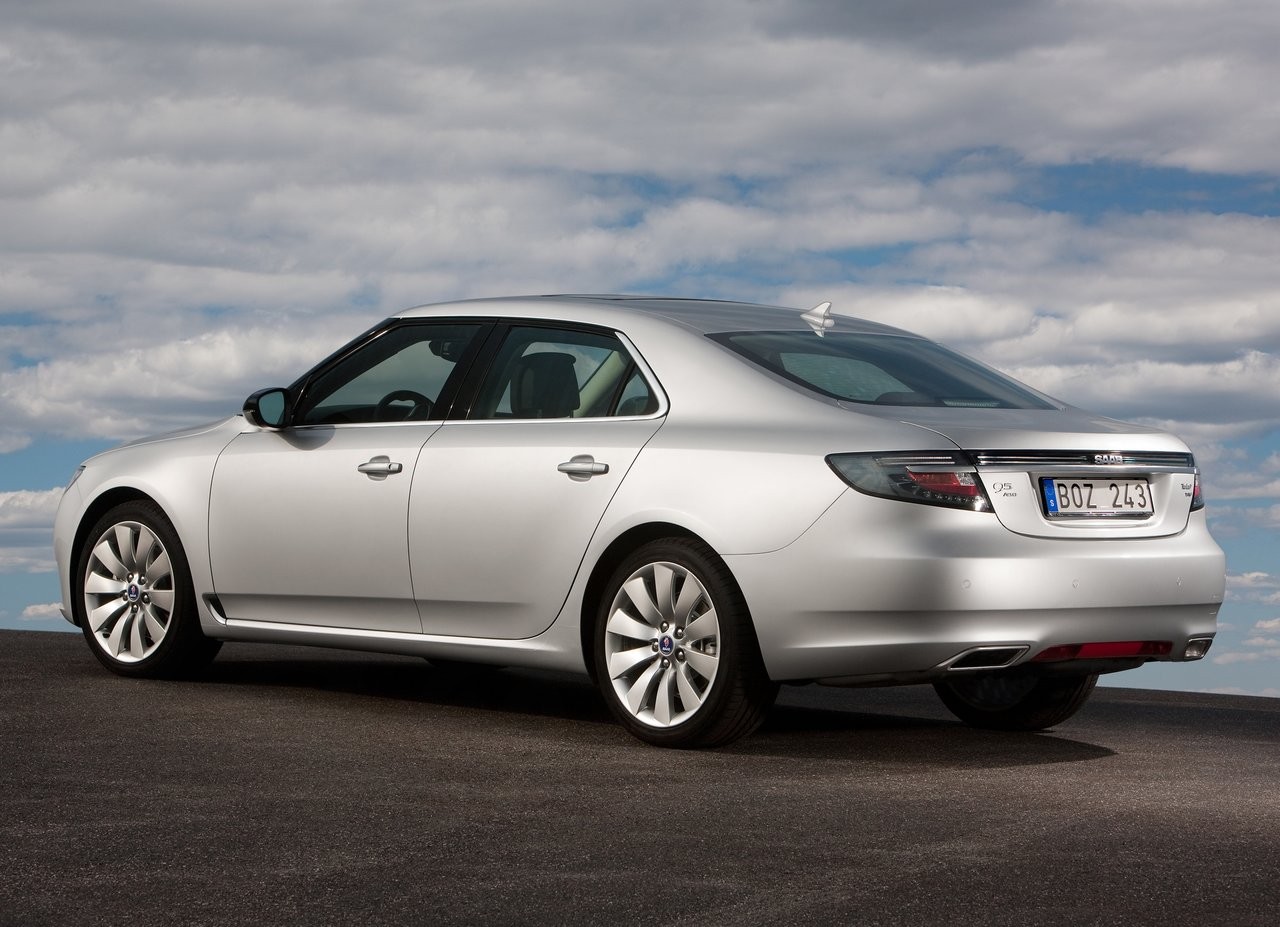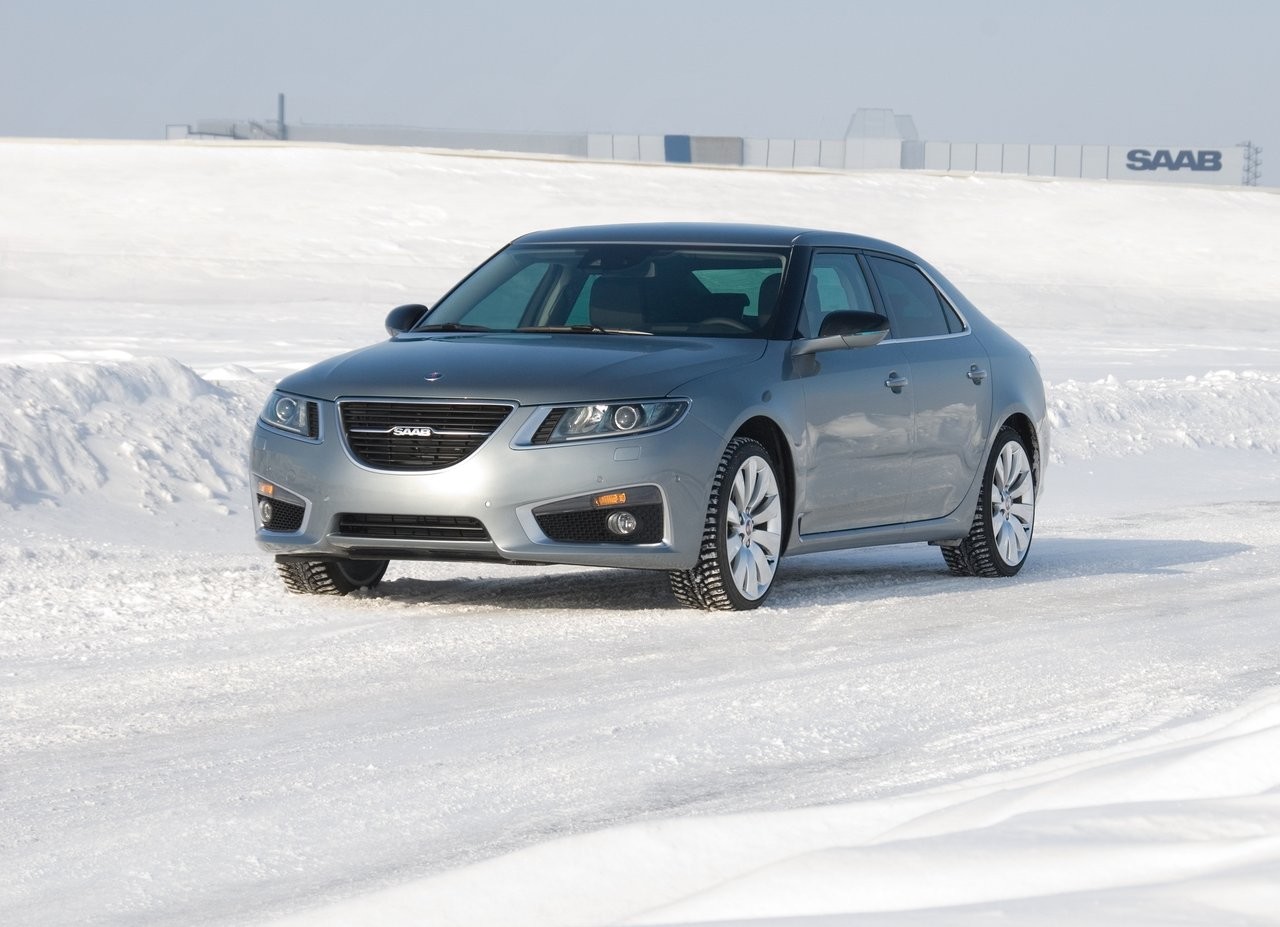
- Powerful 2.8-litre turbo V6 engine for Aero Turbo 6
- Supportive front seats
- Competent ride/handling balance
- Quiet, well-insulated cabin
- Large boot
- For 9-5 Aero Turbo 6, suspension lacks compliance
- Initial turbo lag for 9-5 Aero Turbo 6
- Some cheap interior plastics and switchgear
- Orphan brand
Overview
Released in April 2011, the Saab Mk.2 9-5 was an executive sedan. Manufactured in Trollhattan, Sweden, the Mk.2 9-5 was available with 2.0- and 2.8-litre turbocharged petrol engines (the Turbo4 and Turbo6 variants) and 2.0-litre turbo-diesel engines (the TiD4).
Engines
Of the engines,
- The 2.0-litre Ecotec LHU four-cylinder petrol engine had an aluminium cylinder block and head, direct fuel injection, a twin-scroll turbocharger (water-cooled), double overhead camshafts (chain-driven), four valves per cylinder (with sodium-filled exhaust valves), variable inlet and exhaust valve timing, a compression ratio of 9.3:1 and was capable of running on petrol or E85;
- Manufactured in Port Melbourne, the 2.8-litre LP9 V6 petrol engine had an aluminium cylinder block and head, sequential fuel injection, a water-cooled turbocharger, double overhead camshafts (chain-driven), four valves per cylinder, variable inlet and exhaust valve timing, and a compression ratio of 9.5:1; and,
- The 2.0-litre four-cylinder diesel engine had a cast iron cylinder block, an aluminium cylinder head, direct common-rail injection, a variable geometry turbocharger, double overhead camshafts (chain-driven), four valves per cylinder and a compression ratio of 17.5:1.
A six-speed automatic transmission was fitted as standard across the range.
Plattform and dimensions
The Mk.2 9-5 was underpinned by General Motors’ Epsilon II platform which was also shared with the Opel Mk.1 Insignia and Holden Malibu . Compared to the Saab Mk.1 9-5 , the Mk.2 9-5 sedan was 181 mm longer (at 5008 mm), 76 mm wider (1868 mm), 18 mm taller (1467 mm) and had a 134 mm longer wheelbase (2837 mm). Furthermore, the Mk.2 Saab 9-5 had a drag coefficient of 0.28 Cd and 515 litres of boot space.
Suspension
The Mk.2 Saab 9-5 had MacPherson strut front suspension, though the Turbo6 variants had ‘HiPer’ struts, a modified MacPherson strut with reduced kingpin inclination and a shorter spindle length to reduce camber loss when cornering (and thereby reduce steer reactions and improve traction). While the Turbo4 and Turbo6 variants had linked H-arm rear suspension, the TiD4 variants had independent, four-link rear suspension.
| Variant | Edition | Drive | Engine | Trans. | Peak power | Peak torque |
|---|---|---|---|---|---|---|
| Turbo4 | Vector | FWD | 2.0-litre turbo petrol I4 | 6sp auto | 162 kW at 5300 rpm | 350 Nm at 2500 rpm |
| TiD4 | Vector | FWD | 2.0-litre turbo-diesel I4 | 6sp auto | 118 kW at 4000 rpm | 350 Nm at 1750-2500 rpm |
| Turbo6 | Aero | AWD | 2.8-litre turbo petrol V6 | 6sp auto | 221 kW at 5000 rpm | 400 Nm at 2000 rpm |
Cross Wheel Drive
The Turbo6 was fitted with a ‘Cross Wheel Drive’ system which consisted of two Haldex couplings. In normal conditions, the system provided a 90:10 front:rear torque split, but the pre-tensioned clutch could provide a 50:50 front:rear torque split if a loss of traction was anticipated. Furthermore, the second Haldex coupling was applied to the rear axle and could effectively ‘lock’ the rear axle to provide torque to both the left and right rear wheels.
Safety equipment
Standard safety equipment for the Mk.2 9-5 included dual front airbags, front and rear side airbags, full-length curtain airbags, ABS, electronic brake force distribution, brake assist, electronic stability control, traction control, active front seat head restraints, seatbelts pretensioners for all seats, front seatbelt load limiters and anti-submarining seats (front and rear).
Brakes
The Saab 9-5 had three different braking packages –
- For the TiD4 variants: 295 mm ventilated front brake discs and 292 mm solid rear discs;
- For the Turbo4 variants: 321 mm ventilated front brake discs and 315 mm ventilated rear discs; and,
- For the Turbo6 variants: 337 mm ventilated front brake discs and 315 mm ventilated rear discs.
Euro NCAP testing
In Euro NCAP testing , the 9-5 TiD4 received a five star safety rating which included a 94 per cent adult occupant protection rating and an 80 per cent child occupant protection rating. In the frontal offset impact, good protection was provided for the knees and femurs of the front occupants. Maximum points were achieved in the side impact test, while protection of the chest and abdomen in the pole test was rated as adequate.
Features
Standard features for the Saab 9-5 Vector included 17-inch five-spoke alloy wheels, an eleven speaker Harman/Kardon sound system with a 10GB hard drive, auxiliary inputs (3.5mm/USB/iPod) and MP3-compatibility, satellite navigation system with an eight-inch screen, dual-zone climate control air conditioning, a cooled glovebox, leather seats, power adjustable and heated front seats, cruise control, head-up display, Bluetooth connectivity, bi-xenon headlights with washers, front and rear fog lights, LED daytime running lights, rear parking sensors, automatic headlights, rain-sensing wipers, a leather-wrapped steering wheel with gearshift paddles, 60/40 split and folding rear seats, remote central locking with proximity key, power windows and heated mirrors, a height and reach adjustable steering wheel, a power-operated park brake, driver’s seat and mirror memory settings, 12 volt power outlet, ambient lighting, courtesy lights, an electrochromatic rear view mirror, trip computer, motion-sensing alarm with tow-away protection and an immobiliser.
The Saab 9-5 Aero was further equipped with 19-inch alloy wheels, perforated leather seats, directional bi-xenon headlights, automated parallel parking, power folding mirrors and electrochromatic door mirrors. The Aero was also fitted with a three-mode, electronically-controlled damping system (‘DriveSense’) with ‘Comfort’, ‘Sport’ and ‘Intelligent’ modes; the system was combined with variable assistance power steering.
Related links
